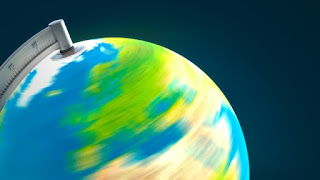On June 29, 2022, something extraordinary happened to the Earth's rotational rate. It may have such a small impact on people's lives that you don't even notice it.
Believe it or not, because of this event, we got an extra 1.59 milliseconds in that day. According to TimeAndDate.com, on June 29, 2022, our planet, as far as scientists know, set a new record for the fastest time to complete one rotation.
How fast is the Earth rotating?
Atomic clocks, recently revealed that the Earth's rotation is accelerating. In fact, the 50 year phase of the shorter day may begin now.
Scientists note that 2020 has the shortest 28 days since 1960. The shortest day in 2021 is longer than 2020, reversing the trend from the previous year.
But on June 29, 2022, our planet made the fastest rotation ever, and on July 26, 2022, it appears that a day lasts less than 1.50 milliseconds.
Earth rotated in 1.4602 milliseconds in less than 24 hours on July 19, 2020, breaking the previous record for the shortest revolution. Why does the Earth's rotation seem to be accelerating?
The cause of the difference in Earth's rotational speed is unknown, but there are many theories. Some experts postulate that this is due to less weight on the poles due to melting glaciers.
Others note that the molten core of our planet's interior moves from time to time. Seismic activity can also be another related cause. Others suspect that the movement of Earth's geographic poles across its surface is known as the "Chandler wobble."
Whether any of these theories hold water is uncertain. However, the Earth's faster rotation could also be due to a combination of these factors or something completely different.
The importance of Earth's rotational speed
The Earth's accelerating rotation has consequences because atomic clocks (used in GPS satellites) do not account for the changing rotation of the Earth.
If the Earth had rotated faster, it would have reached the same position a little earlier. Half a millisecond equals 10 inches or 26 centimeters at the equator. In short, GPS satellites (which had to be corrected for the effects of Einstein's Theory of Relativity on space and time curves) would be useless.
There are also potentially confusing consequences for smartphones, computers, and communication systems, which are synchronized with Network Time Protocol (NTP) servers. It is defined as the number of seconds since 00:00:00 UTC on January 1, 1970.
To complete all these international timers, it may be necessary to add negative leap seconds. Even though the Earth may have been spinning as fast as it could possibly have, a slowdown was unavoidable.

